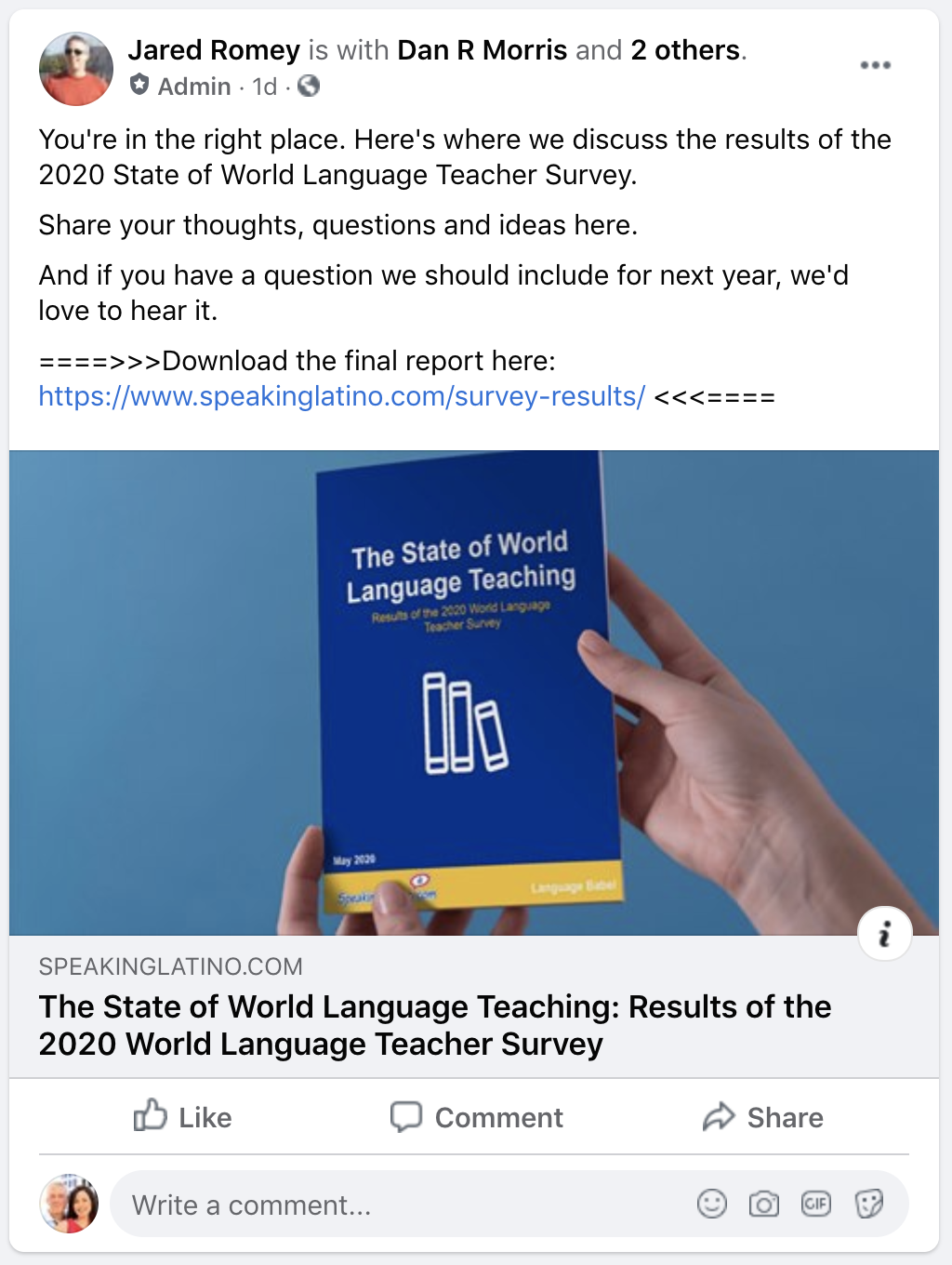
World Language Teacher Survey Highlights:
- 13% of World Language Teachers teaching at the Pre-K through 5th-grade levels reported working part-time because there weren’t enough classes to teach full time.
- 61% of World Language Teachers teach at the high school level
- 15% indicated they weren’t certified to teach the language level they were teaching.
- 73% report their average class size is between 21 – 25 kids, which is considerably higher than the national average of 16.8 students per teacher.
- 41% of language teachers feel isolated as they are the only (or one of two) language teacher in their institution.
- 38% of language teachers work without an espoused methodology, philosophy or curriculum determined by their department head.
- And only 38% of language teachers stated they do have a department chair who specializes in language education.
This State of World Language Teaching Report is a response to the thousands of language teachers who feel isolated in their institution and end up seeking answers, insight, camaraderie, and guidance across the social channels.
Since it’s hard to be completely honest online with our faces and social profiles behind our words and opinions, we felt today’s language teachers needed an anonymous, trusted source to resolve their questions.
This survey was created to give language teachers real answers they can use to make changes to their teaching, to provide comfort in knowing they’re not alone, and help make changes in their institutions and districts. The survey questions covered:
- Demographic Information
- Teaching Environment
- Administrative Decisions
- Compensation and Benefits
Since at least 1991 world language teachers have been fortunate to have had access to surveys taken by a variety of organizations. We reference previous surveys, where necessary, to provide historical reference, to show trends, and to illuminate changes in the landscape. We have also requested comments to the survey responses from a variety of people to add voice and perspective.
In 2013 a large contingent of world language influencers, headed by the University of Maryland, developed a vision outlining the goals for the nation’s future learners. It was called “Languages for All”.
In 2015, at the request of the Department of Defense, the House of Representatives asked the Academy of Arts and Sciences if they would take a look at the state of Language Learning in the U.S. They responded in 2017 by creating an official Commission and creating a final report titled “America’s Languages” Investing in Language Education for the 21st Century”.
Their commission agreed with the 2013 Vision and affirmed their desire that every school in the nation offer meaningful instruction as early in life as possible as part of their standard curricula.
Today that need has been revisited for the first time in several generations. In December of 2019 the President of the United States signed the 2020 National Defense Authorization Act (NDAA) which included, as an amendment, the World Language Advancement and Readiness Act.
As the first piece of federal legislation in a generation that has addressed the language needs of the nation, it has proposed three-year competitive grants supporting local and state school districts trying to establish, improve, or expand innovative programs in world language learning.
It is the first piece of governmental evidence that there is support for the 2013 Vision. The 2013 Languages for All initiative put forth the following goals1:
- Language learning be offered to 100% of students in K-5 schools with the goal of exposure and awareness of global issues.
- 30% of those exposed would continue learning in secondary schools, gaining enough language skills to be able to travel or work in the service industry.
- 15% of those would grow enough to be able to work abroad or in a multilingual environment
- 5% of those to excel at a high level and be able to perform research and interact in international diplomacy.
We analyze these survey results through that lens.
From the perspective of the World Language Teacher, are we doing enough to meet the needs of tomorrow’s learners? Are we doing enough to meet the 2013 Vision or goals of the “America’s Languages” report?
It is our hope that this report helps teachers and local administrators in determining what is needed to improve the State of World Language Teaching in their district.
Continue the conversation about the first Annual Survey for World Language Teachers on the official Facebook thread.

